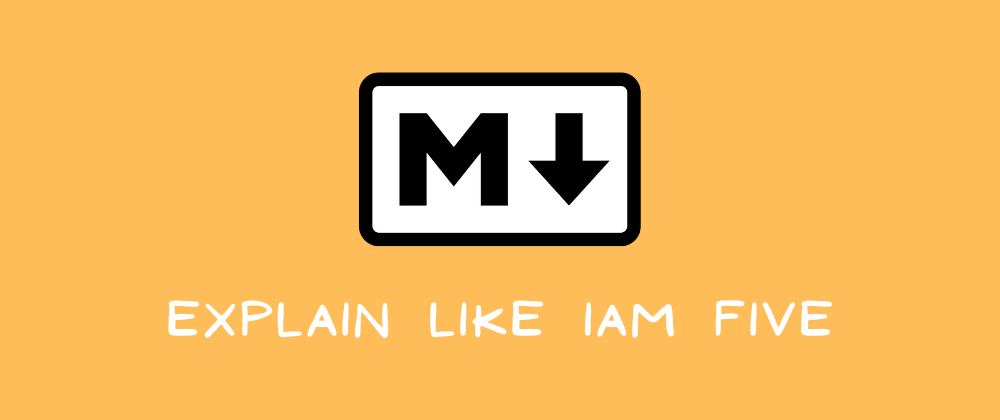Technical Explanation:
Markdown is a lightweight markup language for creating formatted text using a plain-text editor. John Gruber and Aaron Swartz created Markdown in 2004 as a markup language that is appealing to human readers in its source code form
Markup refers to data included in an electronic document which is distinct from the document's content in that it is typically not included in representations of the document for end users, for example HTML is a Markup language.
For Example, Lets assume the below code will be written by developers
<html>
<h1> This is Head </h1>
</html>
But the output will be like this 👇🏻
The end user won’t be seeing the tags written by the developers, they only seeing the outcome.
So Like HTML, Markdown also a markup language where it uses the extension .md
Example :
Text can be ****bold****, _italic_, or ~~strikethrough~~.
Text can be bold, italic, or strikethrough.
[Link to another page](./another-page.html).
You can refer this link for basic syntax of markdown: Link
Why Should I use it?
1. It’s Easy to Learn and Fast to Use
Markdown is dead simple to learn. So typing Markdown is almost always faster than writing with a rich text editor, especially when you start getting into things like links or bulleted lists, which either make you use the mouse or force you to memorize a complicated sequence of keyboard shortcuts. One caveat is that if you need complicated text elements, such as tables, you’re better off sticking to HTML. Fortunately, Markdown has full HTML support, so you can code a table in HTML and go right back to Markdown in the same document.
Plus, it’s much easier to read raw Markdown than it is to read raw HTML. Which, you know, was part of the reason Markdown was even invented.
2. It Converts to HTML Easily
Now, if you’re going to be writing HTML, you should just…write HTML. But if you’re, say, writing an email or a readme file where you need HTML’s formatting options but not the full breadth of its features, Markdown is perfect.
Markdown converts to HTML flawlessly, sparing you the hassle of opening and closing all those tags. In fact, Markdown has the software to convert the plain text to HTML built in! So Markdown is actually a text-to-HTML conversion software in addition to being a markup language.
In fact, Markdown has the software to convert the plain text to HTML built in! So Markdown is actually a text-to-HTML conversion software in addition to being a markup language.
3. Markdown is Futureproof
By “futureproof,” we mean that Markdown is a plain text format. For as long as plain text is the standard (which it will be for a long, long time), Markdown will be usable and openable by modern programs.
Ok enough of Technical explanation lets explain to a 5 years kid.
“Hope you have written something in your notebook, Sometimes you want to highlight some text or want to underline some phrases and you want to do some decoration over the overall context so that the understanding will be much easier. That is what the Markdown does for you.”










Top comments (1)
Alternatively: in the past we had only
**TEXT**emails, not**HTML/RichText**emails. But we still wanted to have some kind of_formatting_. We made up intuitively a syntax based on ascii characters to do that. Some guy noticed it and realized it was a good way to embed formating in plain text that could be easily converted to HTML.